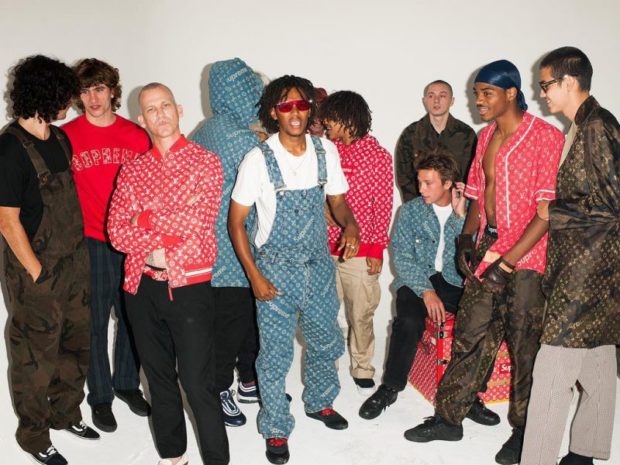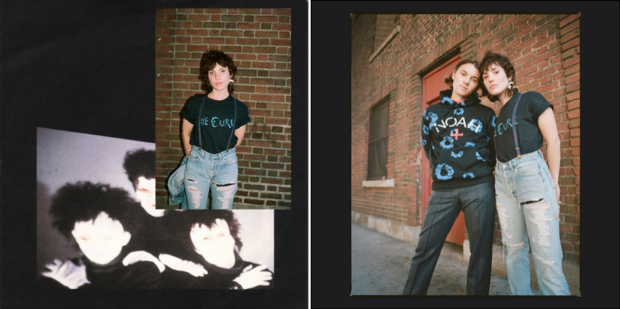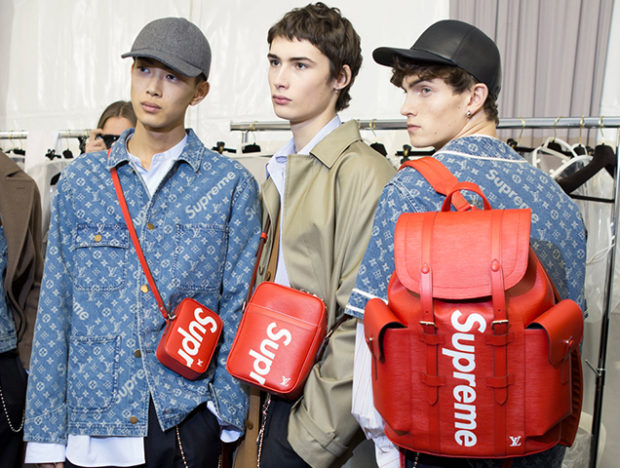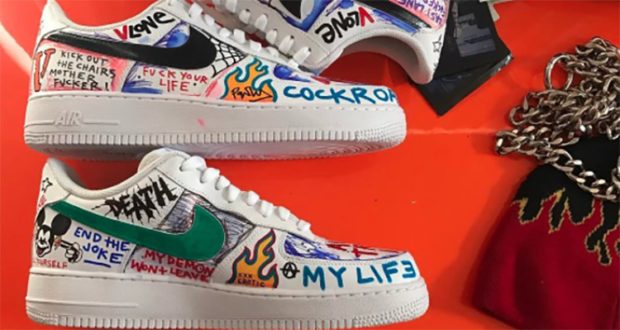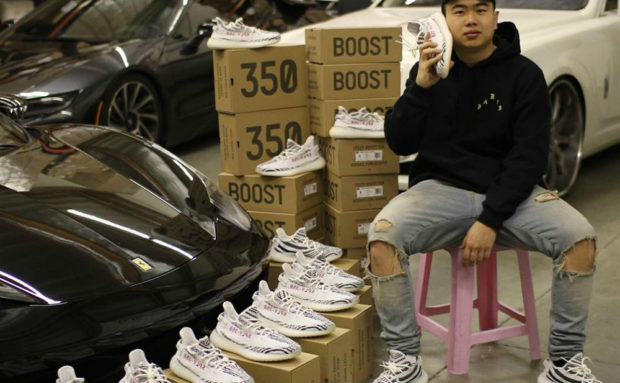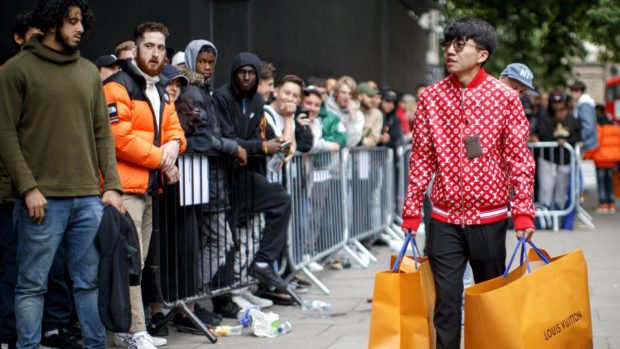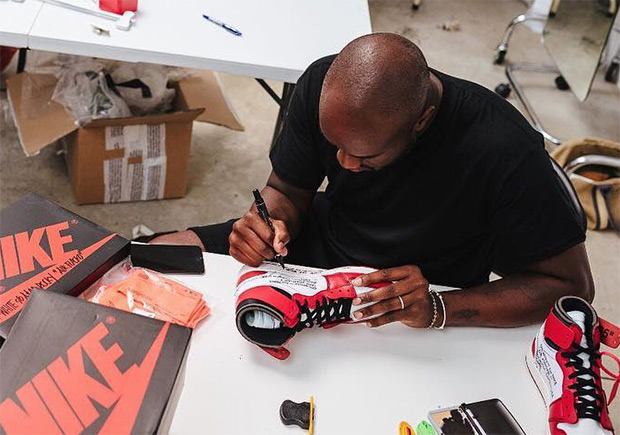2017: the year that streetwear went mainstream.
Over the past few years, the Internet has taken a close-knit underground culture with a rich history full of unique characters, excellent stories, and incredible clothes and for better or worse, it’s been exposed it to the masses. What was once an exclusive club of sorts is more accessible than ever, and in the last twelve months streetwear truly went mainstream, breaking into popular culture in a way that it never had before.
A whole lot happened to streetwear culture in 2017. Extreme trends and borderline excessive collaboration ruled the sphere, high exposure on social media changed the way that the culture is exposed permanently, and the lines between old guard high-fashion houses and street brands were blurred almost to the point of nonexistence. Now that this crazy year has almost drawn to a close, it’s time to look back on both the highs and lows of 2017, and discuss streetwear’s future in 2018 and beyond.
Let’s start with the positives: Due to the Internet, streetwear is more accessible than ever. Although a high level of exposure is not always a good thing for a subculture (you know what they say: nothing can be cool forever), few would argue that giving more people a chance to discover a genuine passion for streetwear and street culture is a bad thing. Even since its earliest days, streetwear has always been moved and influenced by the youth, and a fresh influx of youthful attention is necessary to keep streetwear from becoming stagnant. You have more ways than ever to learn about the culture, and there are more marketplaces available to get product that you may have not had access to previously as well.
Another big plus in 2017 is that it’s the first year that high fashion houses have truly acknowledged the power that streetwear holds. From Supreme’s extensive collaboration with Louis Vuitton to Gucci finally paying homage to Harlem legend Dapper Dan to Alessandro Michele’s bohemian-influenced, embroidery and print heavy designs lifted straight from the streetwear history books featuring prominently in Gucci’s collections, mainstream fashion has finally fully acknowledged the street culture that they’ve beent shamelessly swaggerjacking for so long. As Heron Preston so eloquently stated in his HB100 interview “Things like Dapper Dan’s collaboration with Gucci now are huge wins for culture and for the industry because it is showing that the large corporations are finally acknowledging the streets that they steal from”.
The moment in the spotlight enjoyed by customization & DIY garments and shoes was an excellent part of the past year as well. Streetwear has always had a fiercely independent spirit (even today, when it’s seemingly harder to be unique than ever), and putting individual touches on one’s own pieces is just about the most streetwear thing you can do.
From scribbling on kicks to distressing and re-sewing garments, to heavy use of patches and pins, custom garments and shoes were a big part of the culture over the last twelve months. Even those in positions of power took notice, as OFF-WHITE stans all over the world clamored for Virgil Abloh to sign their shoes, and Nike set up customization labs at many stores and events so attendees could take home their own 1-of-1 pieces. Big-time power players taking notice of the power of a unique personalized item, a trend that started at the very beginning of streetwear as we know it several decades ago? Yeah, that’s pretty cool.
But things weren’t all roses in 2017. There were some negative aspects of the culture as well, mainly caused by the yin and yang of the same forces that brought about the good things, namely the Internet, and social media overexposure.
First and foremost, reselling reached outrageous new heights. Buying limited items to flip has been a part of streetwear for a long time and has helped feed our ecosystem (and kept our own closets full of kicks and gear) to an extent. After all, something can’t be cool if everyone can get their hands on it with no effort, right?
However, the resell market has been wildly blown out of proportion … especially in the last twelve months. Prices for aftermarket garments and shoes are more inflated and internet resellers are more gluttonous than they’ve ever been before. It’s an unfortunate truth that too many people only determine an item’s coolness by its aftermarket price nowadays. It’s not going for at least double retail? Then it’s not worth your time.
This line of thinking and the grossly inflated secondary market could irreplaceably damage the culture if it continues at such a pace. There’s a fine line that’s being frequently crossed between flipping limited products for a quick come-up (something that’s been a part of streetwear ever since the demand for kicks and gear started outweighing the supply) and being an outright culture vulture, shamelessly taking advantage of a meaningful subculture for a quick buck.
Another issue that reared its ugly head in 2017 was excessive collaboration. In the streetwear glory days of the early/mid-00’s a collaboration was something truly special. Two or more brands/companies would get together, and lend their unique touches to something that then, if truly done right, would became a part of streetwear history. Monumentous collabs would only occur a few times a year, and they’d be voraciously discussed, dissected and obsessed over by legions of loyal fans.
Now collaborations are dime a dozen, which minimizes their importance. Seemingly every week, there’s a new sneaker, hoodie, or hat collab that nobody wanted or asked for, and although some collabs in 2017 were cultural-shifting efforts that will go down in the streetwear history books like Supreme and Louis Vuitton or Nike and Virgil Abloh’s “The Ten” collection, there were many more collabs that released, were coveted for a week (or not at all), and then faded away into nothingness.
As Carlo Rivetti, Stone Island’s creative director said when discussing excessive collaboration: “The danger is dilution”. You can have too much of a good thing, and if collaborative products continue to be pumped out at their current rate, we can’t help but worry that they’ll lose all their meaning and importance. They’re supposed to be limited. They’re supposed to be special. They’re supposed to come along every once in a blue moon, not once every week.
On yet another unfortunate note, we lost a legend in 2017 too. Gary Warnett’s passing sent shockwaves through the world of streetwear and street culture. Through his blog GWARIZM, he was a voice of reason in an increasingly unreasonable world. Providing thorough, detailed analysis of streetwear history and design inspirations, Warnett was the conscience that streetwear desperately needed. On a personal note, his work and love of learning about streetwear and sneaker culture was very inspiring to the KicksOneTwo family, and even though we never had the honor of meeting him in person, we will miss his unique voice and wealth of knowledge tremendously.
And finally for the negatives (we don’t like to moan, groan, and complain too much but these are topics worth touching on), street culture on Instagram reached a whole new level of excess in 2017. The ‘gram has always been a great way to show off what you’re doing, what you’re rocking, and where you’re at … and let’s be honest: everyone enjoys a good flex every once in a while, but a few disturbing social media trends need to be curtailed before they spiral even further off the tracks.
Unfortunately too many consumers purchase pieces solely to flex on social media, not because they actually want the item. Not only is this lame from a wardrobe standpoint (why would you not invest in timeless pieces that you can rock for years on end instead of something you’re only going to wear once for a photo?), it also contributes to the excessive reselling mentioned above.
Buy, wear once for a photo, list on eBay or Grailed for an outrageous price. It doesn’t sound too awful in principal, but this wasteful cycle is extremely bad for the culture. Wearing streetwear was once a reflection of your tastes in art, music, and culture and of living an activity based lifestyle. In this Instagram-fueled generation, there seems to be more posing and less living these days.
Not only does this mindset keep pieces out of the hands of people who actually want them to wear, it presents a false image of self for the sake of appearing cool on the internet. What you do and how you contribute to streetwear culture in real life are what’s important, not just how you look on Instagram. Excessively logo-ed fits, over-the-top color coordination, and tacky, stupid videos like this or this? If they outright disappeared in 2018, we wouldn’t shed a single tear.
In conclusion, 2017 was a topsy-turvy year, truly full of ups and downs. The vast mainstream exposure of what was once a humble subculture brought with it both good and bad things, and although the resell market and social media have unfortunately brought streetwear to a tipping point, there’s still a lot of good that can come out of the culture we all love so much.
Our advice heading into 2018? Be true to yourself. Wear what you like. Draw influence from those who inspire you, but be sure to add your own personal touches. Learn as much as you can about streetwear, and cultivate your own style. Stay humble. Share what you know and pay it forwards to the next generation so they can do the same as they grow in their love for the culture. Only you can do you to the fullest. If you do your best to cherish the culture and its rich history, all the negative aspects will fall away.
This article is an end-of-year recap, but also a think piece, meant to foster discussion, so we encourage you to form your own thoughts and opinions, both on this year in streetwear and where you think it may head in the future. Open dialogue, unique opinions, and individual perspectives are crucial to the continuation of true, organic streetwear culture, so we encourage you to become a part of the discussion in any way possible! Hit us up on Twitter or sound off with your thoughts and opinions in the comments. We’ll talk soon.
Share KicksOneTwo

